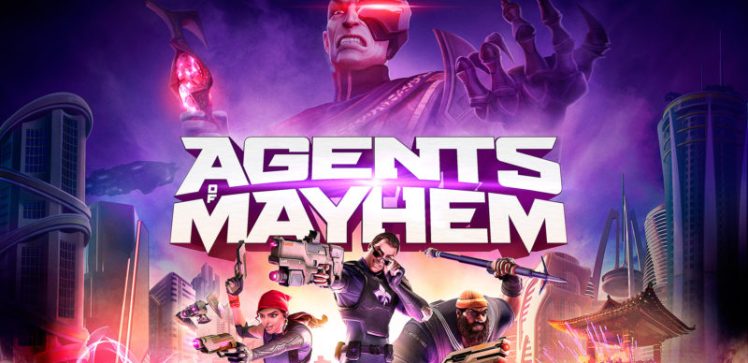Agents of Mayhem is a loosely connected sci-fi spinoff of the Saints Row series that’s got a similar format but is ultimately shallow and devoid of sufficient variety.
Agents of Mayhem
Developer: Deep Silver Volition
Price: $59.99
Platforms: PS4, PC, Xbox One (reviewed)
MonsterVine was provided with an Xbox One code for review
While it’s connected to Saints Row and shares some similarities to it, Agents of Mayhem is clearly its own beast. Setting itself apart from other similar open-world titles are its slight RPG mechanics, hero system and its themes.
The linear story, following the nefarious Dr. Babylon and his league of villains known as Legion, is simplistic and rather shallow. As negative a trait this may seem, the relatively easy and straightforward campaign missions allow for a near-instantaneous sense of progression and push the focus on one of the few areas that the game truly shines, combat.
At first, combat scenarios in Agents of Mayhem seem like they are basic and lack any sort of challenge. The third person controls aren’t anything special and hostile enemies are about as primitive as they come, often walking into walls or simply straight at the player.
There’s no cover system to speak of, and the only real unique thing about how the game’s combat feels is its quick movement and verticality achieved through dashes and triple jumps. However, the relative ease of the game allows players to experiment with the ability to switch between three pre-selected agents on the fly.
Agents of Mayhem’s saving grace is its cast of characters and how they interact with one another. Before any mission or outing in which the player chooses to disembark The Ark, home of the agents of M.A.Y.H.E.M, they must select three from a collection of 13 agents.
Each agent, save for the first three, have pretty enjoyable solo recruitment missions in which the player is really able to get a grasp on the character’s unique abilities and weapons. Every agent has their own weapons, combat abilities, ultimate abilities known as “Mayhem abilities,” loyalty missions, skins and more.
Compared to the writing in the main storyline, the characters and their dialogue are actually pretty decently written. Each has their own individual story lines that I actually cared about for the most part. For example, Rama works with M.A.Y.H.E.M as a means to save her homeland from a sinister plague.
Individually, agents are unique in their combat style, culture and character progression. When agents are combined, average skirmishes become tactical playgrounds. Using the left or right buttons on the D-Pad, the player can immediately switch to any of their 3 selected agents.
While deselected the agents’ shields and abilities recharge, allowing for some pretty significant displays of combo attacks and survivability.
For example, entire battlefields can be decimated by ground-pounding nearby enemies with Yeti, then using Fortune and her explosive energy ball to destroy enemies at range, finally switching to Hardtack to pull in the stragglers using his “teleharpoon” to teleport enemies in range before blowing them away with his shotgun.
The aforementioned Ark, the social hub and forward operating base of M.A.Y.H.E.M, is not too shabby. Within the enormous airship are multiple locations to improve and customize your team.
The Wreck Room is a virtual reality combat space filled with 34 increasingly challenging combat scenarios and rewards upgrade cores. The garage is where agents go to choose which vehicle and vehicle skins they’d like to take into the field and, disappointedly, nothing else.
There’s not much in the way of vehicle customization this time around, a shame, as there aren’t many vehicles that stand out. Beyond these two rooms are the armory, where players can upgrade their agents and their abilities with collectible upgrade cores or level points. Some of these upgrades are linear and expected, such as increasing health pools or shield recharge time, while others modify gameplay with specific perks and ability behaviors.
Despite the diversity and progression among the cast of agents and their abilities, the game grows stale too quickly. After introducing each of the few enemy types within the first hour or so of the game no new ones, aside from a few slightly modified bosses, are ever introduced. I found that after a bit of experimenting I discovered a favorite team of agents and left the rest mostly untouched, causing their levels and viability to fall behind.
The futuristic vision of Seoul is quite stylish, but ultimately empty. Civilians barely fit the requirements of extras in the background, the few non-linear events feel repetitive and bare, and driving around just isn’t all that interesting. Some aspects of the world fail to make any sense at all. For some reason, murdering civilians or causing general havoc attracts the attention of the supervillain conglomerate, Legion, as oppose to the local police force.






